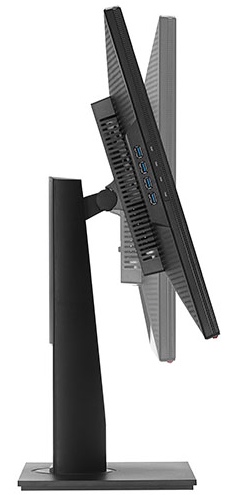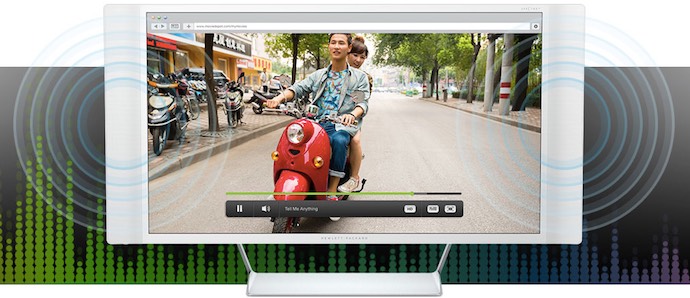
One of the easiest ways to make your desktop PC feel new is to replace the monitor. The same thing holds true for those of you who use a laptop that’s plugged into an external display. One of the great things about monitors also means that many of us are using models that are past their prime. Because you can re-use your monitor when you buy a new PC, there’s a good chance the display sitting on your desk is actually considerably older than your computer. And because things have improved so rapidly over the past few years, an upgrade is well worth considering.
Display technology didn’t stop at the switch from CRT to LCD, it’s been constantly improving since that time. If your monitor is even just few years old, you may be surprised at how much better the current generation is; anything older and it will feel like night and day. Replace that monitor with something new and you’re likely to see many benefits. Monitors are now bigger than ever (the average display size when I bought my first PC was 14-inches while 24 to 29-inches is the sweet spot these days, with 30-inches and up becoming increasingly common), but a new monitor brings a lot more benefits than a larger viewing area.
Crystal Clear Picture
I’ll start with the obvious win: resolution. Displays on pretty much any device you can think of have been increasing in resolution. Smartphones, tablets, TVs and laptops. They’ve all seen major increases in display resolution and PC monitors are no different. Full HD computer monitors are now the standard and an increasing number offer UHD or 4K resolution. Switch to one of these from an older monitor and even if your display gets larger (as it likely will with larger screens being the norm now), it will be razor sharp. This makes reading text much easier on the eyes, lets you have more windows open simultaneously (while still be able to read their contents) and does wonders for any sort of multimedia content.
Go Widescreen for Increased Productivity

Widescreen monitors are now more popular than ever. The advantage of going with a widescreen? Your productivity gets a big boost. A widescreen display isn’t just larger, its aspect ratio lets you put multiple windows side-by-side without having to shrink them down to postage stamp size. You can compare documents or compose an e-mail in one window while watching a video in another. And speaking of video, a widescreen monitor makes watching movies or playing games even better.
Curved = Immersive+
One of the big leaps in technology in the past several years is curved displays. Nowhere is this development more useful than with a computer monitor. Your natural position—sitting in front of the monitor looking straight ahead—means that gentle curve makes the display seem to wrap around you, offering an even more immersive experience. Check out for an idea on how a curved display can improve your PC gaming experience.
 Ergonomics and Saved Space on Your Desktop
Ergonomics and Saved Space on Your Desktop
Monitor manufacturers have continued to evolve their designs, taking advantage of the latest technology, display panels and building materials. As a result the latest generation of computer monitors looks more stylish than ever, with some offering metal finishes and features like minimalist, near invisible bezels. Ergonomics is also increasingly stressed, so expect a new monitor to offer greater flexibility and adjustability than older models, while some will offer specialized modes that reduce eyestrain. These new designs aren’t just sleek and adjustable, because they’re lighter than ever their stands are able to take up less desk space.
If you want to really save space on your desktop, look for a monitor with VESA-compatible mounts. That way you can use a TV bracket to mount the monitor to the wall so it has a zero footprint.
More USB Ports!
Running short of USB ports to power your peripherals and plug in flash drives? I know I am and I can’t be the only one considering the number of USB hubs on the market. Instead of having a hub cluttering your desk, consider leveraging a new monitor to expand your available USB hubs. That’s right, monitor manufacturers are adding more ports so getting a bigger, sharper and brighter picture to look at can also include the benefit of banishing clutter from your desktop. For example, the ACER Predator X34 gaming monitor (which also offers stunning industrial design, a curved IPS panel and QHD resolution), offers five USB 3.0 ports. That’s more extra USB ports than many USB hubs offer!
A Built-in Speaker Upgrade
Computer monitor manufacturers haven’t just been upgrading the panels in their displays, many of them have been busy working on the built-in audio performance too. That makes sense when you consider that many PCs are now used for watching online video, listening to streaming music or gaming. A single tinny speaker just doesn’t cut it anymore and not everyone has the space to be setting up external speakers on their desk. A great example of a monitor with serious audio chops is HP’s 32-inch Spectre 4K Studio Display. It features DTS Audio with a pair of front-firing 6 Watt speakers and rear passive radiators for serious bass reproduction. This monitor isn’t going to replace your home stereo, but it provides the kind of PC experience that should make most owners happy.

Plug in Your Console
Most recent PC monitors include HDMI input and some—like Samsung’s 28-inch 4K gaming monitor—even offer two HDMI inputs, with pushbutton cycling between sources. With HDMI and the ability to accept video inputs from more than just your PC, a new monitor is truly a multipurpose display, one that can be connected to a gaming console or used with a video streamer in place of a TV.
This list should help to show that if it’s been a few years since you purchased your existing computer monitor, you’re in for a pleasant surprise when you discover what new monitors are capable of. Your PC experience won’t just be bigger than ever, it will be better than ever.



